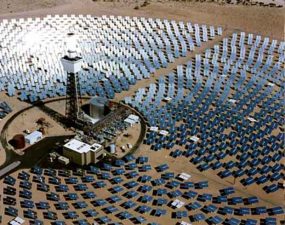We all know that we need to lead a more sustainable way of life if we are to help keep climate change in check. However, it’s easy to forget that going to watch our favourite teams in action every week creates a carbon footprint.
Sports leagues across the world are recognising their role in promoting and supporting the sustainability message as they seek to reduce their impact on the environment. Greener stadiums, supporter education and community initiatives are some of the ways they have sought to redress their carbon footprint. Great examples of this are:
In Holland, the Johan Cruyff Arena is home to Ajax Football Club and a climate neutral stadium. It is powered by 4,200 solar panels and a wind turbine while excess energy is stored using 148 Nissan Leaf car batteries. Rainwater is re-used to water the field, and grass cuttings are fed to local sheep and turned into cheese.
The New Lawn Stadium
The first carbon neutral football club and the greenest on the planet, is Forest Green Rovers who play in England. A pitch irrigated with rainwater, a mower powered by solar panels on the stadium roof and a kit made from bamboo are just a few of their many initiatives. A new stadium will soon be built made entirely from wood that promises to further enhance the clubs sustainability and biodiversity.
Green NFL Stadiums
When it comes to low carbon footprint stadiums, the NFL also leads the way with several sites boasting impressive green credentials. The New York Giants Metlife Stadium, Philadelphia Eagles Lincoln Financial Field and The Baltimore Ravens M&T Bank Stadium are some of the most energy efficient and sustainable in the league.
Perhaps the most impressive of all however, is the Mercedes Benz stadium in Atlanta, which is the first professional sports venue in the US to achieve LEED Platinum Certification. Unique features that target energy reduction, renewable energy, stormwater management, and water efficiency were all incorporated into the stadium design.
Can the NFL do more to reduce its carbon footprint?
While greener NFL stadiums are welcome, game days inevitably create a large amount of pollution and waste. Fans driving to the stadium, energy and water usage, plus food and packaging waste all have an impact on the environment.
While supporters at this year’s Super Bowl cheer on the Packers, Bucks, Chiefs or whoever else your Super Bowl bet is on, they can also celebrate the greenest Super Bowl ever. The SoFi Stadium in Inglewood, California, thanks to NFL Green, will be the greenest professional sports event in America.
What is NFL Green?
Created back in 1993, NFL Green is the league’s environmental program which aims to not only mitigate the environmental impact of the NFL, but create a green legacy in each community that hosts Super Bowl, Pro Bowl, and NFL Draft.
These hands-on projects create a lasting difference in each host community, long after the event is finished. Examples of these schemes include:
Food Recovery
The Super Bowl generates huge quantities of food and beverages, much of which is not consumed. Partnering with local food banks and event managers, NFL Green ensures unserved food and beverages are donated to help feed those in need.
Recycling and Waste Management
Waste diversion programs are designed to increase recycling and composting of all appropriate waste and reduce the amount sent to landfill.
Community Greening
NFL Green has incorporated community greening projects into the management of Super Bowl, Pro Bowl, and the Draft by working closely with local community organizations and parks and recreation departments. Projects include tree planting, restoring habitat, engaging in reforestation projects and creating community gardens and green spaces for kids to play.
A more sustainable future
There is still much to be done when it comes to reducing the carbon footprint of the NFL, but there is no doubt that teams are pulling in the right direction.
The Philadelphia Eagles, thanks to a concerted recycling effort, send only 1% of match day waste to landfill, everything else is recycled or repurposed.
Atalanta’s Mercedes Benz stadium is located near a public transport hub, has electric recharging points, pedestrian walkways and even a bike valet program to encourage alternate ways to arrive at the game.
Soldier Fields, home to the Chicago Bears, has increased its recycling and composting and serves more locally grown food, donating unused foods to homeless shelters.
The Levi’s Stadium, home of the 49ers, has a solar array that produces enough power over the year to offset its use during the season. The green roof technology used also increases insulation and decreases heating and cooling costs.
Sustainable stadiums are not the sole answer however, the most vital part of a greener NFL requires spectators to buy into the vision and do their bit come game day. But as green technology and education improves, the environmental impact of the NFL will continue to fall, creating a more sustainable long-term future for football and sport in general.




